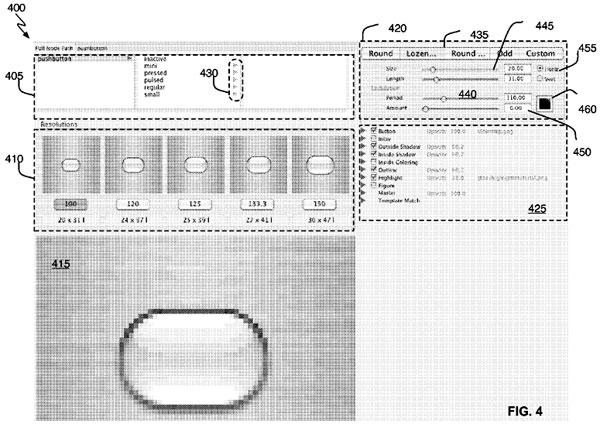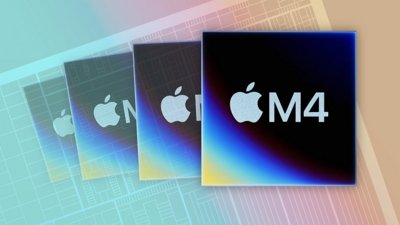Apple Computer is looking to secure exclusive rights to techniques required to produce resolution independent user interfaces, one of the supported features of its forthcoming Mac OS X Leopard operating system.
Essentially, the technology breaks the software assumption that all display output is to be rendered at 72 dots per inch (DPI), allowing an operating system like Mac OS X to draw or represent user interface elements using a scale factor.
"The invention provides a method to represent a graphical user interface object's material map in a procedural and, therefore, resolution independent manner," Apple wrote in the filing. "The method includes receiving values for each of a plurality of attributes associated with a material map object, associating a value for each of the plurality of attributes, and storing the plurality of attributes and their associated values in a file."
The company said 'recipe' files for resolution independent user interfaces may be "flat" or hierarchically-ordered, where a collection of attribute-value pairs form a complete description of the graphical user interface object's material map, hence allowing a rendering module to create a visual representation of the material map at any number of resolutions.
In one interesting aspect of the otherwise predominately procedural filing, Apple notes that "because material maps in accordance with the invention are represented procedurally, they may be encrypted to prevent unauthorized inspection or use."
Another benefit of the technology, the company said, is that each user interface attribute may be associated with a plurality of values, thereby permitting the designer to optimize an object's design for each of a specified number of resolutions.
In a case where the displayed resolution of the graphical object falls between two of the resolutions specified by the designer, a rendering engine may interpolate between the two values — a technique that generally provides a significantly improved display — Apple added.
Earlier this year, Apple informed developers through documentation for Leopard that the introduction of resolution independence means that they may have some work to do in order to make their applications look as good as possible.
"For modern Cocoa and Carbon applications, most of the work will center around raster-based resources," the company said. "For older applications that use QuickDraw, more work will be required to replace QuickDraw-based calls with Quartz ones."
Apple's intention to support resolution independence with Mac OS X was first detailed in an August 2004 AppleInsider report.
 Prince McLean
Prince McLean







-m.jpg)






 Malcolm Owen
Malcolm Owen
 William Gallagher
William Gallagher
 Andrew Orr
Andrew Orr









-m.jpg)




30 Comments
It sounds pretty complex. I'm looking forward to this.
This sounds great, I am really looking forward to this...
As long as everyone is playing dirty, it is essential that Apple patent any innovations, regardless of whether or not they should be patented! Whether or not they should go chasing other people is another story, but at least they aren't getting screwed over or having to settle like they have had to in the past.
That's nice. I hope it offers the ability to make all the text larger without breaking window layouts or downresing the monitor. Then that would allow higher pitch displays and still be readable to more people.
If the patent is granted, Microsoft finally won't be able to steal/copy another MacOS feature.
If the patent is granted, Microsoft finally won't be able to steal/copy another MacOS feature.
Patents are 2 fold: 1 is getting the patent which ANYONE can get on ANYTHING.
2 is suing anyone who violates it, and winning.
I could have a patent on the wheel from 2000 BC, but it doesn't do any good if I don't have the scratch to sue firestone.
You have your patents, they have theirs. Many times, people are given patents for something that have already been patented. In that case, enforcement of the patent lies on the original person. That person has to go to court to get rid of the second patent, or they can go to court when the johnny-come-lately starts suing others (far more likely).
So Apple patents this resolution independent thing. M$, 10 years from now, incorporates it. A few years after that, M$ sues Apple for fast user switching. Apple counter-sues because M$ is using the resolution independent thing. Sun Microsystems sues everyone because they're going bankrupt and they actually own patents on everything. Hilarity ensues.
It's all about leverage and NOTHING about intellectual property. There is simply too much sh¡t out there to figure out if you have something they patented or visa versa.